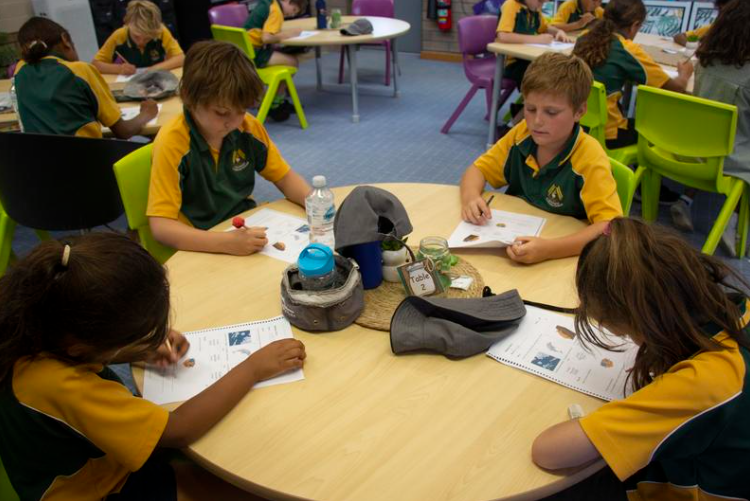Practice Provide Positive Praise and Affirmations
-
Module Introduction2 Topics
-
Delivered With Fidelity15 Topics|2 Tests
-
Cover
-
Module Objective
-
What Happens When Positive Praise and Affirmations Are Provided With Fidelity?
-
How to Provide Positive Praise and Affirmations
-
Using Affirmations in Lessons
-
The Teacher Teaches Expected Behaviours
-
The Teacher Teaches Expected Behaviours: Example
-
The Teacher Delivers Lessons Fluently While Providing Praise
-
The Teacher Delivers Lessons Fluently While Providing Praise: Example
-
Providing Positive Praise Throughout the Day
-
Students Are Confident, Engaged Learners and Have Appropriate Behaviour
-
Students Are Confident, Engaged Learners and Have Appropriate Behaviour: Example
-
The Teacher Contributes to Building a High Expectations School Culture
-
Check Your Understanding
-
Test Your Understanding
-
Cover
-
Not Delivered With Fidelity11 Topics|2 Tests
-
Cover
-
What Happens When a Technique is not Delivered with Fidelity
-
The Teacher does not Promote Expected Behaviours
-
The Teacher does not Promote Expected Behaviours: Example
-
Teachers are not Practising Adequately to Improve their Practice
-
Teachers are not Practising Adequately to Improve their Practice: Example
-
Students are not Confident, Engaged Learners and do not have Appropriate Behaviour
-
Students are not Confident, Engaged Learners and do not have Appropriate Behaviour: Example
-
The Teacher does not Contribute to Building a High-Expectations School Culture
-
Check Your Understanding
-
Test Your Understanding
-
Cover
-
Barriers That Impede Fidelity9 Topics|2 Tests
-
Cover
-
Barriers that Impede Delivering the Technique with Fidelity
-
Using Deductive Logic to Identify the Cause of the Barrier
-
Not Understanding why Providing Positive Praise and Affirmations is Required
-
Do not Know how to Provide Positive praise and Affirmations
-
Unfamiliar with Lesson Content so Unable to Provide Positive Praise or Affirmations
-
Not Providing Positive Praise Leads to more Incidences of Inappropriate Behaviour
-
Check Your Understanding
-
Test Your Understanding
-
Cover
-
Removing Barriers That Impede Fidelity15 Topics|2 Tests
-
Cover
-
Ways to Tackle Barriers So That the Technique Is Delivered With Fidelity
-
Teachers Learn Why Positive Praise and Affirmations Are Required
-
Process
-
Understand How to Give Positive Praise and Affirmations
-
Process
-
Become Familiar With the Lesson to Be Able to Add Specific Positive Praise and Affirmations
-
Prepare for the Lesson Process
-
Practice Delivery Process
-
Lesson Practise While Adding Positive Praise
-
Prevent and Manage Inappropriate Behaviour
-
Prevent and Manage Inappropriate Behaviour Process
-
Check Your understanding
-
Test Your Understanding
-
Lesson Completed
-
Cover
-
Module Completion Survey1 Topic
Participants 439
The Teacher Teaches Expected Behaviours: Example
ddewell@goodtogreatschools.org.au August 7, 2023

The Teacher Teaches Expected Behaviours: Example

Chris (teacher) is working with his students in small collaboration groups. Before students break into groups, Chris reviews the rules and routines with his students for group work. The students are then asked to move into their assigned seats in their assigned group. ‘I’m impressed how quickly and quietly you moved to your assigned seat in your group Johnny, Sabra, Tilly and Seth, you earned two points for your group’, says Chris.
As the students work, Chris makes statements such as, ‘You guys are legends! You are letting everyone in your group have a turn’, ‘Jess, very neat note-taking. Anyone can read your clear notes’, ‘CJ, great, waiting your turn to talk!’ ‘Orange group, great job staying in your seat and raising your hand when you have a question’, and ‘Green group, thank you for using your inside voice’. Chris also nods and smiles at his students when they are doing a good job. He also gives the thumbs up signal when he is not close to students.
Chris has taught the expected behaviours to his students and then reinforced them with specific praise statements that include the expected behaviours.

